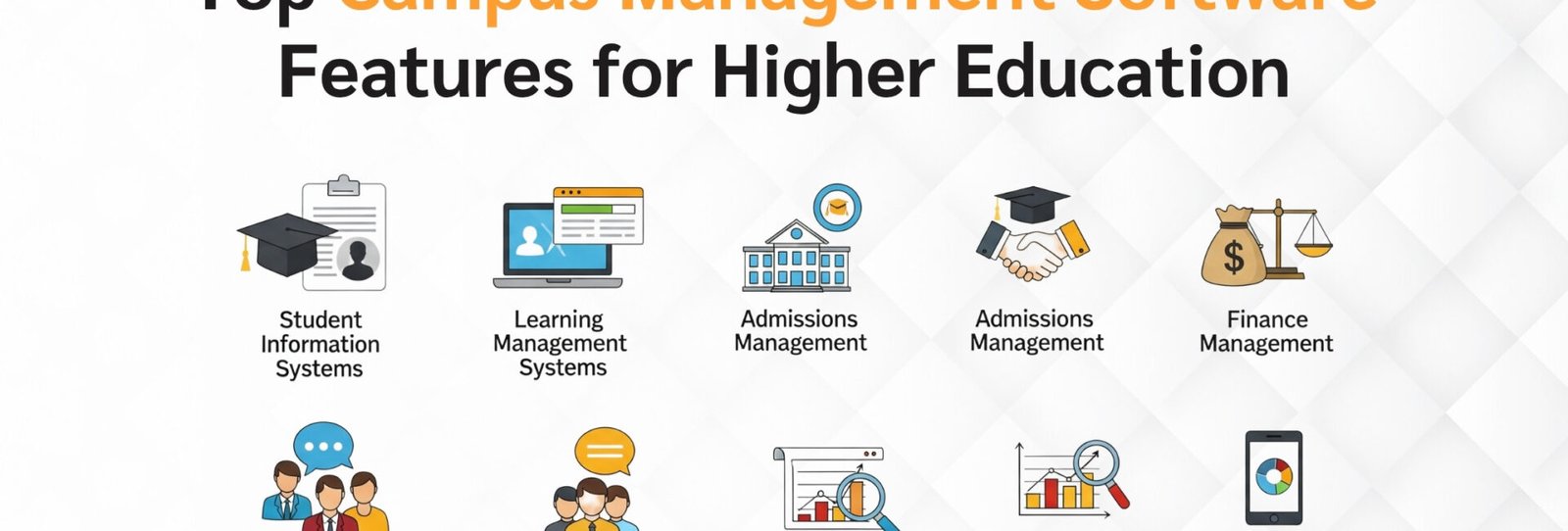
How Campus Management System Software Solves Real Issues
Running a campus smoothly is no easy task. From scheduling classes and tracking attendance to managing fee payments and student records, universities and colleges juggle countless moving parts every day. When these systems don’t talk to each other, the result is confusion, delays, and a lot of manual effort.
That’s why more institutions are switching to campus management system software to simplify day-to-day operations. It brings everything—academics, finance, administration, and communication—under one roof, so teams can work more efficiently, and students get a better experience.
1. Too Many Systems, Not Enough Clarity
Many campuses still use separate tools for admissions, exams, student services, and financial tracking. This creates silos—departments operate on their own, and data doesn’t flow between them. When a student’s records are updated in one system, another system might still be outdated.
Campus software solves this by connecting departments. Everyone—from academic advisors to finance teams—works with the same, up-to-date information. There’s no second-guessing, no duplicate data entry, and far fewer errors.
2. Manual Tasks Drain Staff Time
Administrators and academic staff often spend hours on repetitive tasks: entering student data, preparing grade reports, emailing students individually, or chasing missing documents.
Good software automates these tasks. It generates reports instantly, sends automated alerts for fee reminders or attendance issues, and helps staff focus on actual student support rather than paperwork. That means less time fixing problems—and more time preventing them.
3. Students Expect Speed and Simplicity
Today’s students expect to do everything online—whether it’s registering for classes, paying fees, or downloading transcripts. When systems are slow, outdated, or require in-person steps, it frustrates students and lowers satisfaction.
A unified platform gives students a self-service portal where they can handle everything on their own time. It also means they get timely notifications about schedule changes, exam results, or any issues with their account—all from one place.
4. Missed Deadlines and Communication Gaps
Without a centralized alert system, it’s easy for students to miss key deadlines. Staff may rely on emails that go unread or notices that never reach the right person. Communication gaps also lead to confusion during emergencies or last-minute changes.
With built-in messaging and alerts, campus software ensures the right message reaches the right people—fast. Whether it’s an exam location change or a weather-related campus closure, alerts can be sent instantly via SMS, email, or app notification.
5. Limited Visibility for Decision-Makers
Department heads and university leadership need access to real-time data. But in many institutions, reporting is done manually, often days or weeks after the fact. That makes it hard to identify problems early or make fast, informed decisions.
Campus platforms offer dashboards with real-time data on enrollment, fee collection, academic performance, and more. Decision-makers can spot trends, compare departments, and take action based on what’s happening—not what happened last month.
6. Difficulty Scaling Operations
As universities grow—adding new courses, departments, or campuses—their systems often can’t keep up. What worked for 1,000 students quickly breaks down at 5,000.
Campus software is built to scale. Whether you’re managing one building or multiple campuses across a region, the right system can support growth without adding complexity.
7. Compliance and Record-Keeping Challenges
Institutions are required to maintain records for audits, accreditation, and legal compliance. Missing or inconsistent documentation can lead to serious issues during reviews.
Campus systems provide structured storage, access logs, and version histories to ensure that nothing is lost or misplaced. Reports can be generated quickly when needed, and policies can be tracked with full visibility.
8. Staff Turnover Disrupts Processes
When key staff leave, undocumented processes often go with them. This causes delays, confusion, and onboarding problems for new hires.
With a digital system, processes are embedded into the platform—such as how to approve course changes or track disciplinary actions. New staff can step into their roles without starting from scratch.
Final Thoughts
A strong campus management system software doesn’t just organize data—it solves the real problems that students, faculty, and administrators face every day. It helps institutions operate more smoothly, reduce errors, and stay responsive to both academic and operational demands.
In a world where time, accuracy, and communication matter more than ever, choosing the right system isn’t just an upgrade—it’s a long-term solution.


